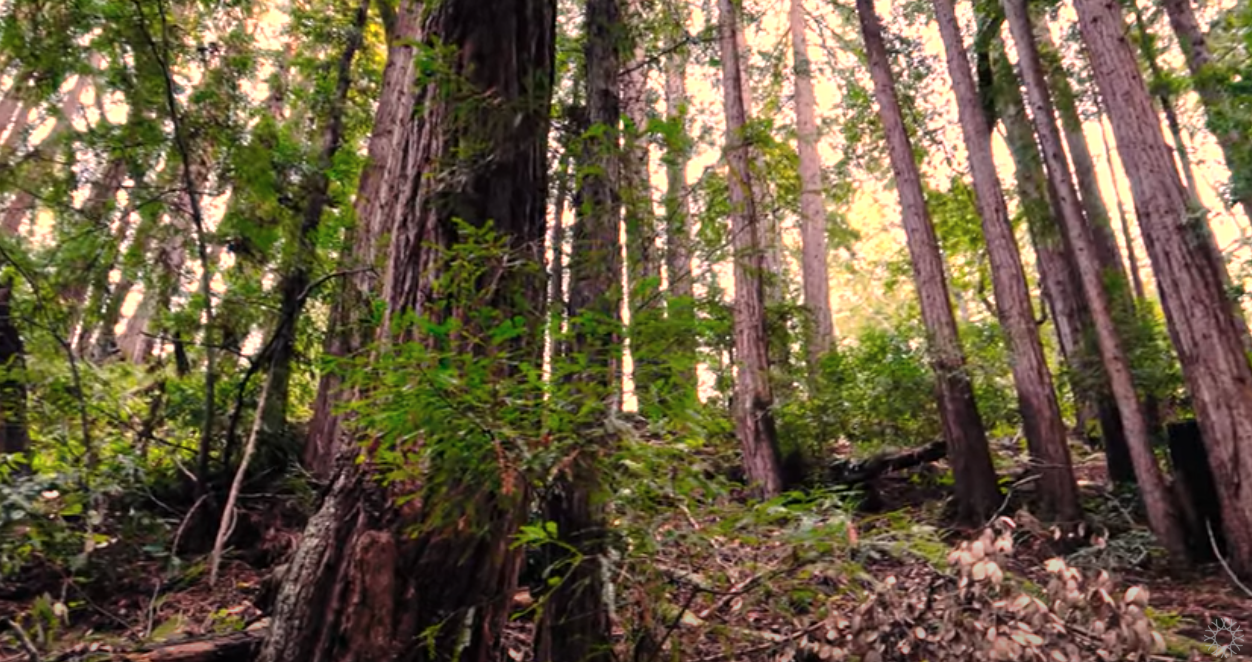Overview
The Resilience of Redwood Trees

Authors: The Connected California: Ohlone Unit was researched, authored, and edited by the California Indian Museum and Cultural Center, California Indian Education for All, and the San Diego County Office of Education. Additionally the videos from this unit come from the California Academy of Sciences. The California Academy of Sciences is a renowned scientific and educational institution dedicated to regenerating the natural world through science, learning, and collaboration. Based in San Francisco’s Golden Gate Park, it's the only place in the world to house an aquarium, planetarium, rainforest, and natural history museum—plus cutting-edge research programs—all under one living roof. The unit resources were designed and created from funding through the California Department of Education’s Native American Studies Model Curriculum grant and contract.

Connected California: Ohlone Unit (Lesson 2 of 3)
- Lesson 1 : Restoring the Presidio – A Journey Through History and Ecology
- Lesson 2 : The Resilience of Redwood Trees
- Lesson 3 : Exploring California’s Redwood Trees
Grades: 3rd – 5th Grades
Suggested Amount of Time: 60 minutes
Curriculum Themes:
- History
- Relationship to Place
- Cross Curricular Integration
Lesson Highlights
- Students investigate the unique adaptations that help redwood trees survive environmental challenges such as fire and drought.
- Each group researches a specific redwood characteristic (e.g., bark, sprouting roots) and connects it to the tree’s overall resilience.
- Students develop conservation plans and visual presentations to advocate for the protection of redwood forests.
- Integrates scientific inquiry with Indigenous perspectives on environmental balance and resilience.
Learning Objectives
- Students will understand the unique characteristics that contribute to the resilience of redwood trees.
- Students will explore the environmental challenges redwoods face and how they adapt to survive.
- Students will analyze the importance of conservation efforts in protecting redwood forests.
- Students will identify and describe the unique characteristics that make redwood trees resilient.
- Students will explore the challenges redwoods face and their adaptations for survival.
- Students will work in groups to research redwood tree features and create a conservation plan for redwood forests.
- Students will synthesize information and create visual presentations to share their findings.
- Students will explain how redwoods adapt to environmental challenges and propose strategies to protect redwood forests.
Teacher Background
Essential Understandings of California Indian History and Culture
Essential Understanding 1: Great Diversity Among Tribes (EU1 Video) https://bit.ly/NASMC_EU1
Essential Understanding 2: Diversity Among Identity (EU2 Video) https://bit.ly/NASMC_EU2
Essential Understanding 3: Native Traditional Beliefs (EU3 Video) https://bit.ly/NASMC_EU3
Essential Understanding 4: Policies that Affected Tribes (EU4 Video) https://bit.ly/NASMC_EU4
Essential Understanding 6: History from a California Indian Perspective (EU6 Video) https://bit.ly/NASMC_EU6
Unit Background
The Connected California: Ohlone Unit is an interdisciplinary learning experience designed for students in grades 3–5 that centers Indigenous knowledge, history, and ecological science through the lens of the Ohlone people's connection to land. Developed in partnership with the California Indian Museum and Cultural Center, California Indian Education for All, and the San Diego County Office of Education, the unit explores environmental restoration and resilience by highlighting Native voices and traditional ecological knowledge. Students examine the cultural and ecological significance of the Presidio of San Francisco and California’s redwood forests through hands-on inquiry, storytelling, and reflection.
Throughout the unit’s three lessons: Restoring the Presidio, The Resilience of Redwood Trees, and Exploring California’s Redwood Trees students investigate environmental challenges and restoration efforts, analyze plant adaptations, and create advocacy and conservation campaigns. Learning is guided by the 5E instructional model (Engage, Explore, Explain, Elaborate, Evaluate) and emphasizes the Indigenous values of respect, reciprocity, and reverence. By integrating social studies and science standards, and incorporating culturally responsive teaching, this unit supports students in understanding the intersections between Native history, environmental health, and civic responsibility. Through video storytelling, group collaboration, and artistic expression, students are empowered to become stewards of the land and to recognize the ongoing contributions of Native communities to California’s ecological and cultural landscapes. Each lesson incorporates storytelling from Native voices, student collaboration, and reflection activities that foster cultural respect, environmental awareness, and community engagement.
Core Themes:
History and sovereignty
Cultural strengths and Indigenous knowledge systems
Environmental relationships and stewardship
Science, civics, and ELA integration
Students will:
Analyze environmental impact on Indigenous communities and ecosystems.
Explore Indigenous cultural perspectives on redwoods and the environment.
Investigate ecological roles of redwood trees.
Evaluate solutions for balancing conservation and human needs.
Express learning through art, reflection, and collaborative discussion.